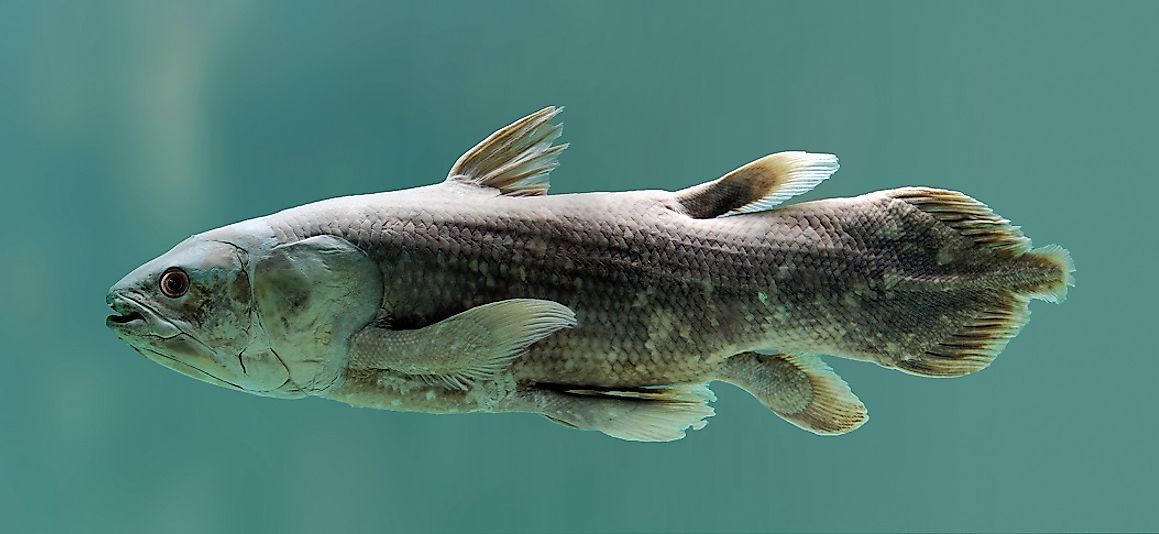Native Fish Of Madagascar

Madagascar's fish, similar to its terrestrial animals, exhibit high levels of endemism and rarity. The Indian Ocean coastline of the country allows a vital ecosystem of fish to exist and yet limit their distribution. As such, endemism and rarity are primarily due to habitat limit and geographical restriction coupled with the fragmentation of ecology. From freshwater fish such as the Fairy Mullet, which swims to open seas during spawning, to the Madagascar skate, a critically endangered species with less than 500 individuals remaining, and the West Indian Ocean Coelacanth, which together with the Indonesian Coelacanth makes up the rare Genus of Latimeria
Native Fish Of Madagascar
West Indian Ocean Coelacanth (Latimeria chalumnae)
The West Indian Ocean Coelacanth, or the African Coelacanth (Latimeria chalumnae), is a rare species of vertebrates in the Latimeria genus which has only two extant species, the other being the Indonesian Coelacanth. The species has a dark blue color, hence its name, which camouflages it from prey. The amount of oxygen passing through the gills for absorption is dependent on the water temperatures. As such, the fish sinks or rises to find ideal conditions including dim light since their eyes are sensitive. They hunt at night for squid and other fish species. This coelacanth can reach up to 2 meters and weigh as much as 80 kilograms. The adult females are larger than males. The species has a wide distribution, ranging from Madagascar and the Comoros to the East African Coasts of Kenya and southwards along the coastline of South Africa. They prefer to live at depths of 700 meters below sea level, though they are more commonly found at between 90 and 200 meters. The International Union for the Conservation of Nature (IUCN) describes the species as critically endangered. The Convection on International Trade in Endangered Species forbids any international trade of the species for commercial purposes and regulates any trade involving the species including sending specimens to museums.
Paratilapia pollen (Paratilapia pollen)
The Marakely (Paratilapia pollen) is a cichlid species endemic to Madagascar. The medium sized fish resembles a perch fish in shape. The adults are jet black in color and have bright spots that change from blue to golden depending on the fish movement and angle of the light. Males are usually 11 inches in length with females half the size. The males also have longer and sharper pelvic fins, straighter dorsal and anal fins, and a more rounded head than females. This cichlid species is highly adaptable surviving in altitudes of up to 1500 meters and water temperatures of 12° Celsius and 40° Celsius in hot springs. The species inhabits rivers and associated streams in Northern Madagascar. It is omnivorous and an occasional opportunistic piscivora that preys on smaller fish thanks to their dark coloration. The IUCN describes the fish as vulnerable from its limited distribution and fragmented habitats resulting from deforestation of river catchments leading to habitat loss and a decline in the number of mature individuals.
Dipturus crosnieri (Dipturus crosnieri)
The Madagascar skate (Dipturus crosnieri) is a fish species restricted to Madagascar in the Nosy B area, along its southwestern coast, and along its northeastern coast off of Tulear. The fish prefers to live in the open seas, and it is benthic on the continental slopes at depths of 300 to 850 meters. Madagascar skate is a relatively small fish at least 61 centimeters. Similar to other skates, the Dipturus crosnieri is oviparous, yet little is known regarding its biology. Wet trawling gear may indirectly cause an adverse impact on the species. So far, Habitat loss is the primary threat facing the species especially with the depletion of the crustaceans and finfish along the Madagascar coast. Deep-water shrimp fishing is prone to inadvertently capture this species, though the Madagascar Skate itself has no market value. Deep-sea fishing is a considerable threat to the species considering its limited range, rarity, and limited available habitat. Careful monitoring of regional fisheries needs implementation. Also, further research to determine the species distribution, gain information on population size and life history and understanding its biology needs to be undertaken.
Agonostomus telfairii (Agonostomus telfairii)
The Fairy Mullet (Agonostomus telfairii) is a species of fish in the Mugilidae Family. The fish species is native to the Eastern coast of Africa where it inhabits the freshwater bodies and estuaries in Madagascar, Comoros, Mauritius, Reunion, and Mayotte. The species attains a length of 75 centimeters upon reaching sexual maturity and usually goes back to sea to spawn. The fish is oviparous, and the eggs are pelagic and non-adhesive. The tropical fish also thrives in marine waters, brackish, pelagic-neritic, and catadromous ecosystems.
Rare Fish in Danger
Many of the endemic and rare fish species in Madagascar are on the verge of extinction. Some of these fish have little economic value. Some. such as the Marakely, are commonly considered delicacies. However, deep sea fishing threatens the survival of fish such as the Madagascar skate. Little is known on the state’s legislative measure aimed at conserving the native species. Fishing activities and degradation of water catchments areas need regulating if some of these species are to survive the century.
Native Fish Of Madagascar
| Native Fish of Madagascar | Binomial Scientific Name |
|---|---|
| Fairy Mullet | Agonostomus telfairii |
| West Indian Ocean Coelacanth | Latimeria chalumnae |
| Madagascar Skate | Dipturus crosnieri |
| Marakely | Paratilapia polleni |
| Kotsovato | Paretroplus kieneri |
| Songatana | Oxylapia polli |
| Damba Mipentina | Paretroplus maculatus |
| Trondo Mainty | Ptychochromoides betsileanus |
| Chinestripe Goby | Stenogobius polyzona |
| Dusky Glass Perch | Ambassis fontoynonti |











